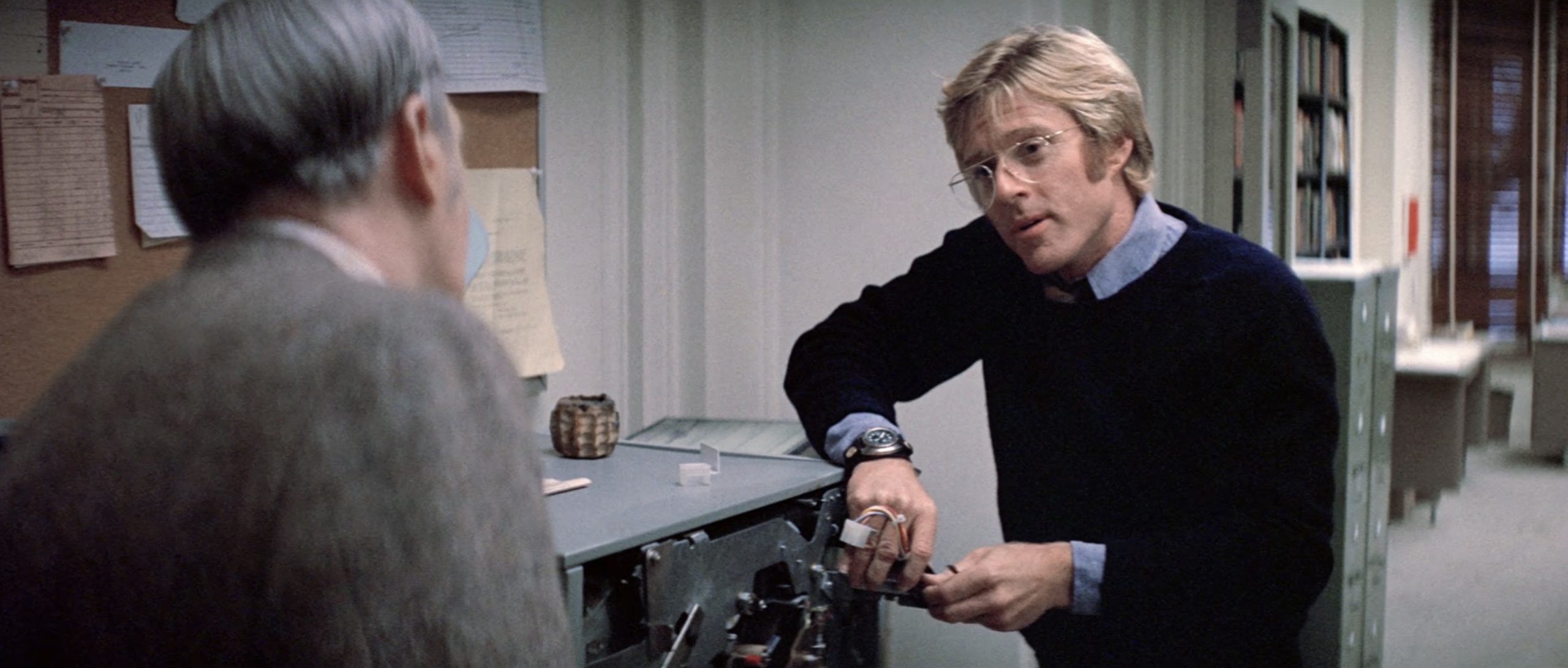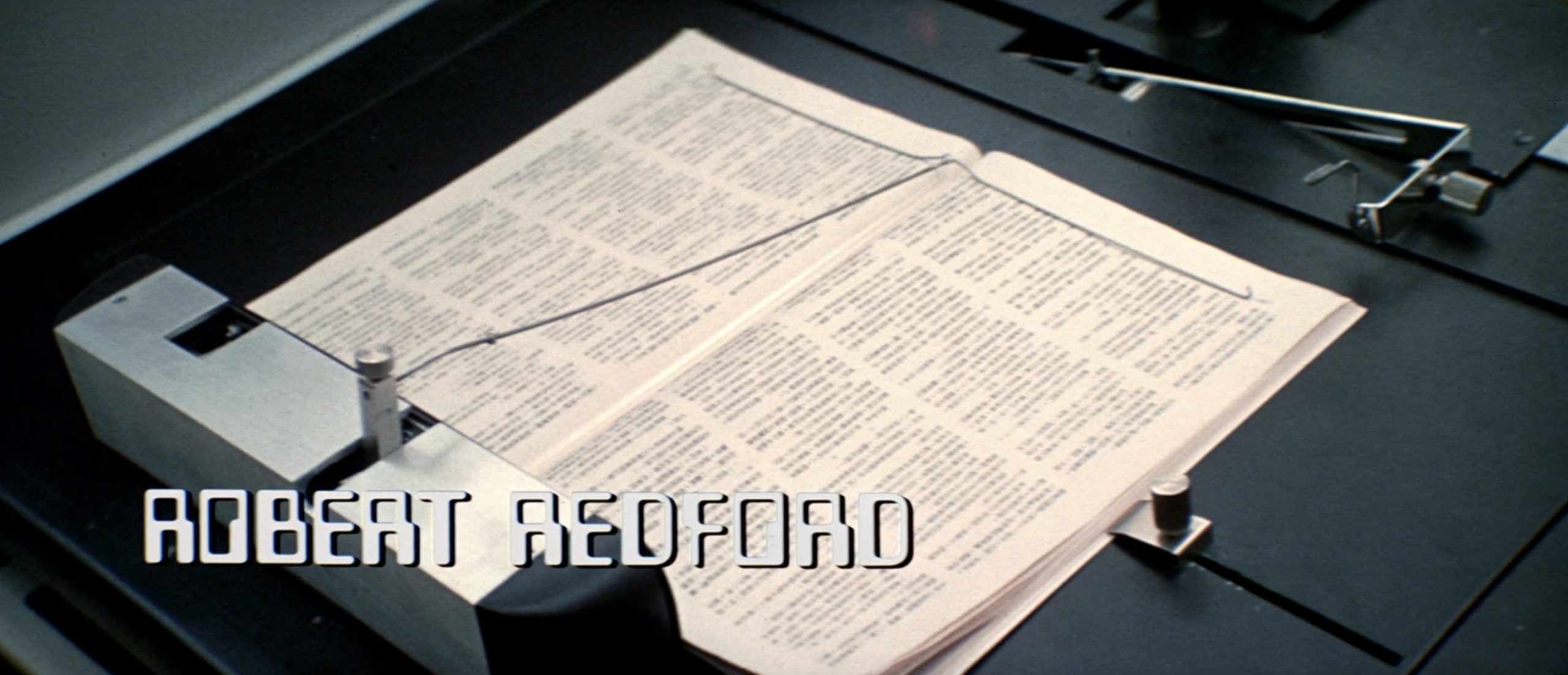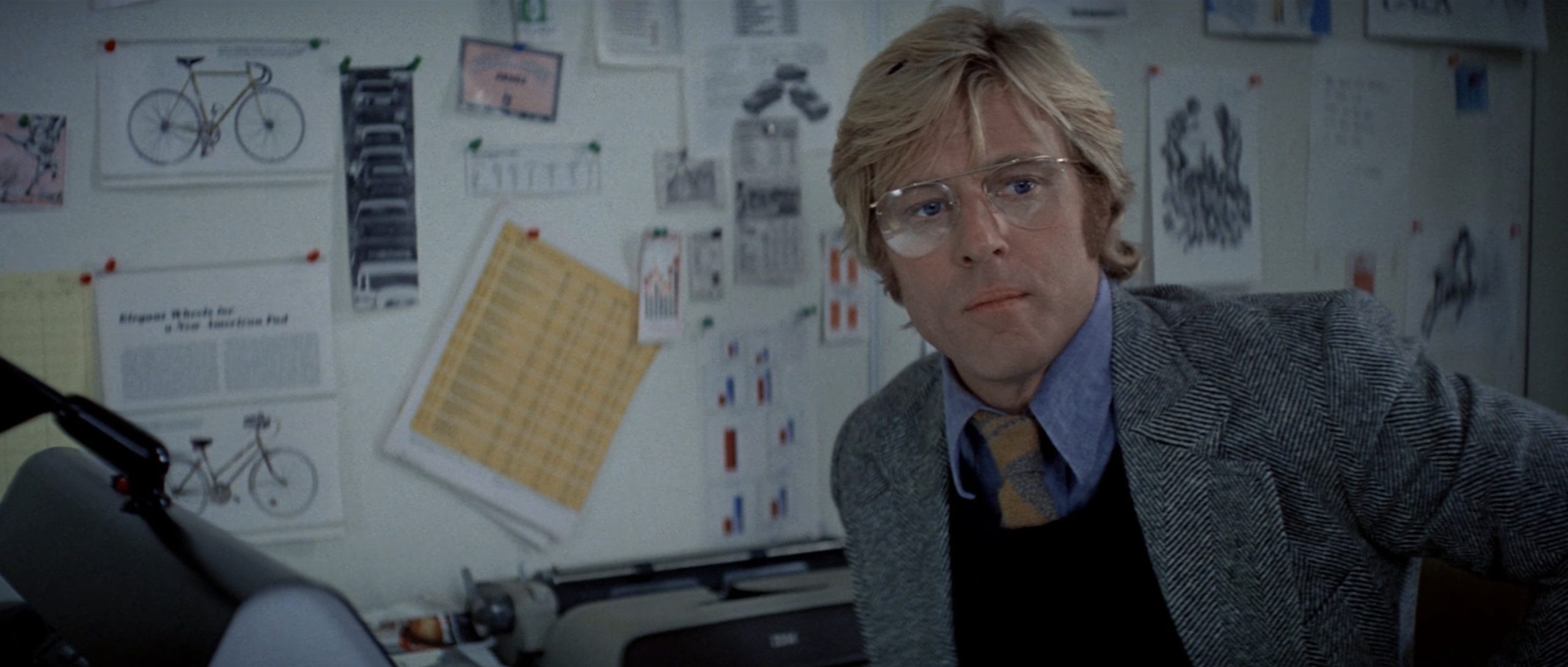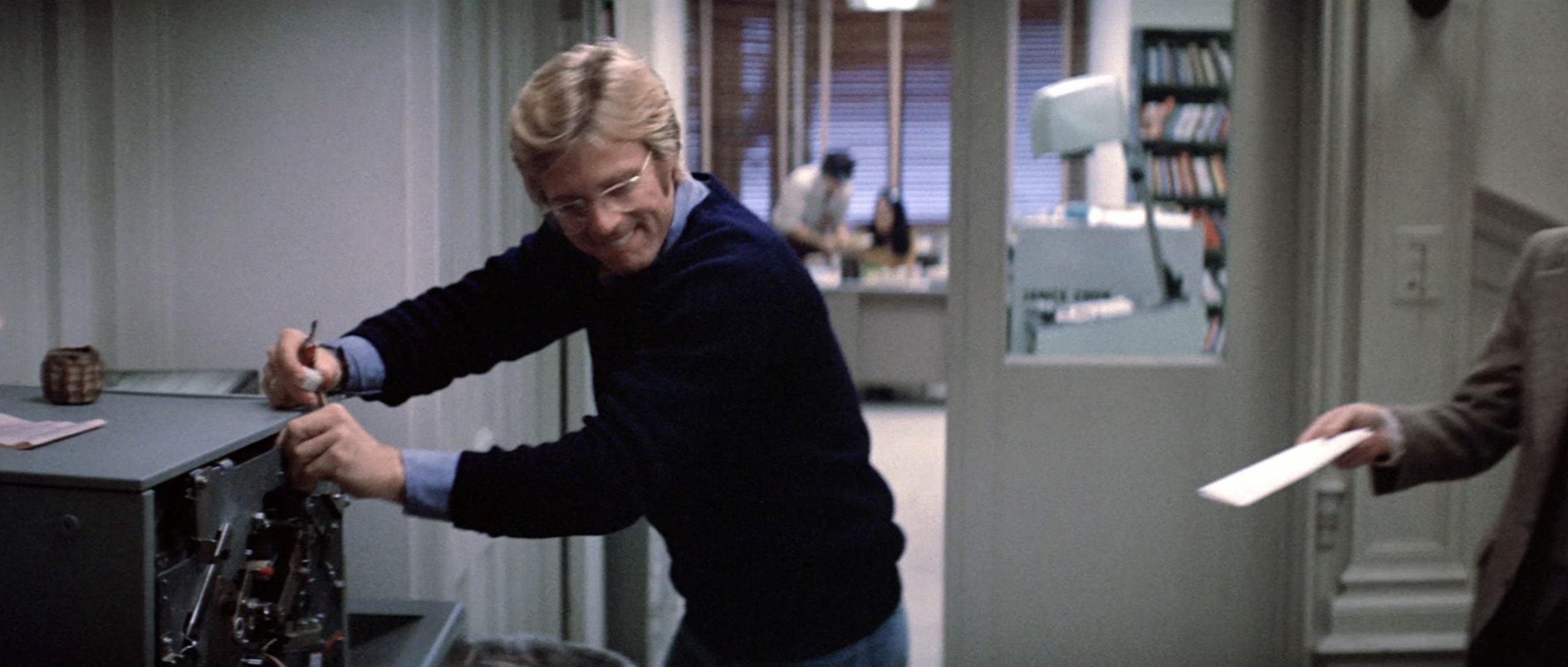MINUTE 9: CONDOR
By:
December 11, 2023
I wrote the following essay in August 2023, at the request of Nicholas Rombes, editor of the MINUTE 9 series for 3:AM magazine.
At minute nine of the 1975 political thriller Three Days of the Condor, we find Joe Turner (Robert Redford), a bookish CIA “reader-researcher,” handily repairing a malfunctioning communications device with a Swiss Army knife while arguing with his punctilious supervisor.
“We have people to service these machines,” Dr. Lappe protests.
“These things are really pretty simple,” Turner insists. “They just look complicated.”
This is an ironic moment, since just a few minutes later our protagonist will become embroiled in complication. His harmless, even hapless colleagues will be mowed down by a hit squad while he’s out picking up lunch. Later that same day, he will narrowly avoid being assassinated by Wicks, the head of his own department, only to be framed for killing not only Wicks but Sam, a fellow CIA staffer and friend. While dodging both the CIA and members of the hit squad, who may or may not be in the employ of the CIA, Turner will struggle to make sense of… everything.
There’s more going on in the Swiss Army knife scene, though, than mere ironic foreshadowing. Thanks to Sydney Pollack’s direction, Stephen Grimes’ art direction, Dave Grusin’s soundtrack music, and Lorenzo Semple Jr. and David Rayfiel’s screenplay (adapted from a 1974 potboiler, James Grady’s Six Days of the Condor), the movie’s previous eight minutes have subtly primed us to comprehend — pre-consciously — the thematic import of this seemingly minor incident.
While the opening titles roll, we find Turner’s fellow reader-researchers, one of whom nerdily sports an accountant’s green visor, assiduously preparing outré reading material to be fed for the purpose of quantitative analysis into a mini-computer via punch cards and an OCR scanner. A more glamorous colleague monitors the device (DEC’s PDP-8/e, one hears), ensuring that its buttons have been pressed and its reels of paper tape replenished. They bicker amicably about how to feed a murder-mystery question into “the machine” without producing an error message. As for the titles’ typeface, it apes Moore Computer — which had been designed just a few years earlier to meet the needs of various other automatic document-reading technologies. So these coffee-fueled office drones are participating in their own disintermediation! Once the computer no longer requires their assistance, they will be eliminated as ruthlessly as though by a hitman.
Those of us worried that Artificial Intelligence applications are coming for our jobs — those of us, that is to say, whose work hasn’t already been disintermediated by AI — can surely relate.
Turner, to the contrary, is no drone. His musical theme is jazzy, spontaneous; it clashes with the static-like white noise of the computer’s scanning device, its spinning tape reels and nonstop dot-matrix printing. Forever late to work, Turner prefers — like Bartleby the Scrivener — not to become a smoothly functioning cog in a mechanism that he perceives as alienating. Across a New York City whose streets are dominated by hulking cars and trucks he rides a Solex, the French motorized bicycle ridden by Jacques Tati in the 1958 anti-mechanization comedy Mon Oncle. He japes at an impatient driver who’s yelling something at him. He japes at “Sarge” and Mrs. Russell, the front-desk staffers at 55 East 77th (supposedly the offices of the American Literary Historical Society), who monitor and attempt to regulate his movements. He japes at Dr. Lappe, who fusses over procedural niceties and querulously suggests that Turner doesn’t belong there. If he knows how to fix the machine, it’s because he hasn’t yet been absorbed by it.
We are invited to decode other fleetingly glimpsed signifiers in the movie’s first minutes, too. For example, whereas his colleagues have barely personalized their communal space — holiday kitsch, snapshots, a child’s drawing, a (real) 1974 TIME magazine cover featuring CIA honcho William Colby’s visage and the cover line “The CIA: Has It Gone Too Far?” — Turner’s private office is overflowing with Buckminster Fuller-esque models, artsy and intellectual posters and prints (Einstein, Picasso’s Don Quixote sketch, Daumier’s phrenological caricatures), and a couple of bicycle diagrams — one of which illustrates a 1973 Fortune magazine portfolio of “elegant wheels.” Although a coworker gripes that Turner “isn’t the only mind in this place,” we understand that he is as stubbornly independent and eccentric a thinker as he is an individual.
One could go on. Turner’s blue cotton shirt with Western detailing reminds us of Jeremiah Johnson, the Western on which he and Pollack had previously collaborated; that movie, too, features a stubborn individualist who goes from hunted to hunter when his loved ones are killed. He also wears a Doxa SUB300T Sharkhunter diver’s watch — which is renowned for being both highly functional (it was standard equipment on Jacques Cousteau’s Calypso) and eccentric. But those bicycle schematics… they point us back to what’s going on at the nine-minute mark.
Turner is an open-source, or perhaps it’s more accurate to say an open-collaboration guy. What he doubtlessly admires about the bicycle is the fact that — unlike the automobile, which by this point was on its way to becoming a black-box system — its working parts are open to view, and therefore relatively effortless to comprehend. When a piece of office equipment goes haywire, then, he doesn’t hesitate to remove its casing and tinker with its inner workings. So at the movie’s end, when a CIA stooge makes the case that because the geopolitical situation is complex, ordinary Americans mustn’t be allowed to participate in decision-making regarding the shenanigans that the agency gets up to on their behalf, we know that Turner isn’t going to buy it.
“Ask them,” he says, speaking on behalf of us ordinary Americans.
These things are really pretty simple — they just look complicated.
MORE FURSHLUGGINER THEORIES BY JOSH GLENN: TAKING THE MICKEY (series) | KLAATU YOU (series intro) | We Are Iron Man! | And We Lived Beneath the Waves | Is It A Chamber Pot? | I’d Like to Force the World to Sing | The Argonaut Folly | The Perfect Flâneur | The Twentieth Day of January | The Dark Side of Scrabble | The YHWH Virus | Boston (Stalker) Rock | The Sweetest Hangover | The Vibe of Dr. Strange | CONVOY YOUR ENTHUSIASM (series intro) | Tyger! Tyger! | Star Wars Semiotics | The Original Stooge | Fake Authenticity | Camp, Kitsch & Cheese | Stallone vs. Eros | The UNCLE Hypothesis | Icon Game | Meet the Semionauts | The Abductive Method | Semionauts at Work | Origin of the Pogo | The Black Iron Prison | Blue Krishma! | Big Mal Lives! | Schmoozitsu | You Down with VCP? | Calvin Peeing Meme | Daniel Clowes: Against Groovy | The Zine Revolution (series) | Best Adventure Novels (series) | Debating in a Vacuum (notes on the Kirk-Spock-McCoy triad) | Pluperfect PDA (series) | Double Exposure (series) | Fitting Shoes (series) | Cthulhuwatch (series) | Shocking Blocking (series) | Quatschwatch (series)




